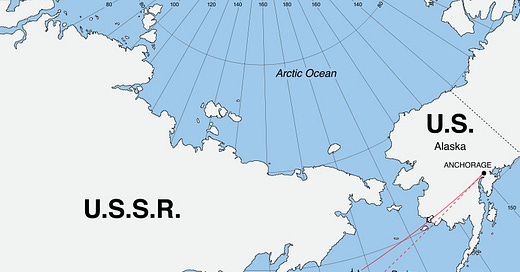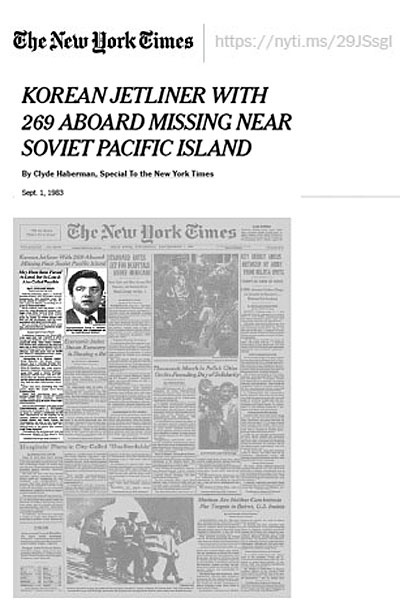Forty years ago, one country shot down the vessel of another country when it strayed into its airspace near sensitive military installations. It was 1983 and, that time, it was the Soviet Union shooting down a U.S. plane it believed to be on a spy mission. That time, the U.S. was the airspace violator and the violated country was roundly pilloried as barbaric for its violent response.
For me, it was a cautionary tale of how governments manipulate the facts to serve their political interests. Fresh out of journalism school, I got myself assigned to a cover-story package for the LA Weekly on the first anniversary of the downing of Korean Airlines Flight 007. While this incident did not make the Conspiracy Theory Hall of Fame, it certainly raised a lot of eyebrows and eventually became the subject of Seymour Hersh’s book, “The Target is Destroyed.”
In the wee hours of Sept. 1, 1983, Soviet pilots intercepted a Korean Airlines commercial flight straying into Soviet airspace and shot it down. LA Weekly Editor Jay Levin was convinced that President Reagan had secretly approved a plan to let KAL 007 wander over the Pacific coast of the Soviet Union so U.S. intelligence could analyze its defenses – 269 passengers be damned. He wanted Australian journalist David Hirst and me to find the smoking gun.
We looked everywhere and couldn’t find it. To be sure, there were lots of questions about the official story and conspiracy theories proliferated, but there were few answers. How could three navigation systems fail simultaneously to take the plane 300 miles off course? Why didn’t the U.S. Air Force surveillance aircraft patrolling the area report the fateful drift? Once again, was the U.S. government complicit or just incompetent?
We did, however, find the government telling a lie. Our story was titled “Safe on Sakhalin.”
Safe on Sakhalin
If you had picked up the New York Times on the morning of Sept. 1, 1983, you would have seen a front-page story titled, “Korean Jetliner With 269 Aboard Missing Near Soviet Pacific Island.” Clyde Haberman reported that KAL 007 had “disappeared” near Sakhalin Island and that “early reports” indicated the plane had been forced down by Soviet planes with all passengers and crew “believed to be safe.”
These “early reports,” delivered to nail-biting family and friends waiting at the Seoul Airport, came from the Korean Foreign Ministry courtesy of the CIA, the Times reported. (If your morning paper was the Washington Post, you would have seen the headline, “Missing Airliner Reported Safe on Soviet Island.” The article quoted the brother of a passenger: “We've just heard from the State Department ... the plane is down and apparently the passengers are safe.”)
So, you’re thinking, the missing airliner is safe! Then you put down your New York Times and turned on the “Today Show” – there was Secretary of State George Shultz talking about KAL 007. But instead of telling the world the plane was safe on Sakhalin, he was condemning the Soviets for willfully shooting down an airliner full of innocent civilians.
The CIA had spread fake news to the world by reporting that KAL 007 was sitting safely on some Sakhalin Island tarmac when, in fact, it wasn’t. The Soviets lied as well. The official Tass news agency reported that Soviet fighter planes had tried to guide "an unidentified plane" that twice "violated the air space of the USSR," but that "the intruder plane did not react to the signals and warnings from the Soviet fighters and continued its flight in the direction of the Sea of Japan."
Fast-forward 40 years and we find the U.S. shooting down a balloon of Chinese origin. Some suspect it of conducting surveillance of sensitive military sites in Montana. China claims it was a weather balloon that strayed off course. The balloon was shot down with no casualties. China is flummoxed, saying the U.S. overreacted.
The tables are turned – the U.S. was violated and the Chinese were the culprits – but I suggest the lessons of KAL 007 need to be remembered.
1. Intelligence agencies routinely feed false narratives to the press, so take government statements with plenty of salt.
2. Keep in mind that governments often manipulate the narrative to prime its people for war and other belligerence.
3. Editors often have preconceived notions and assign reporters to find the appropriate facts.
4. Suspend judgement until the facts are in. It might take years.






